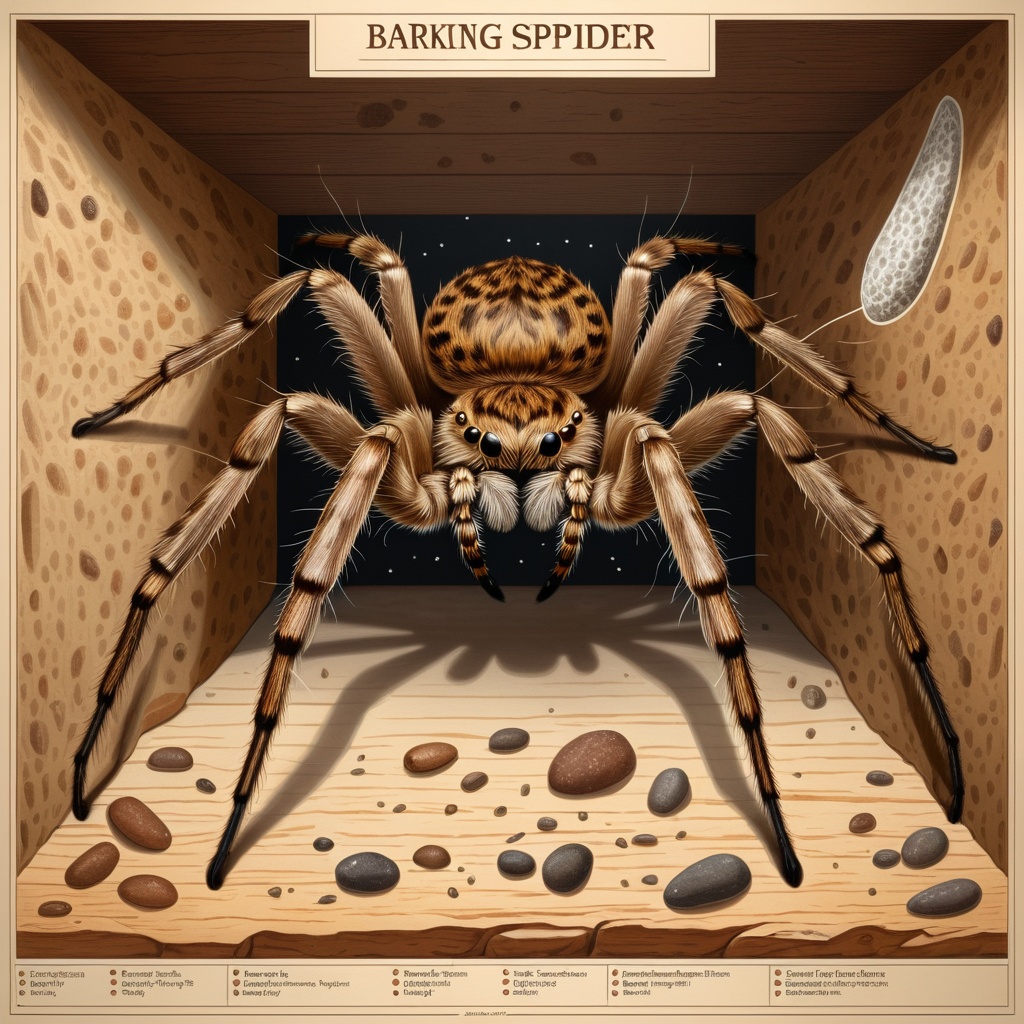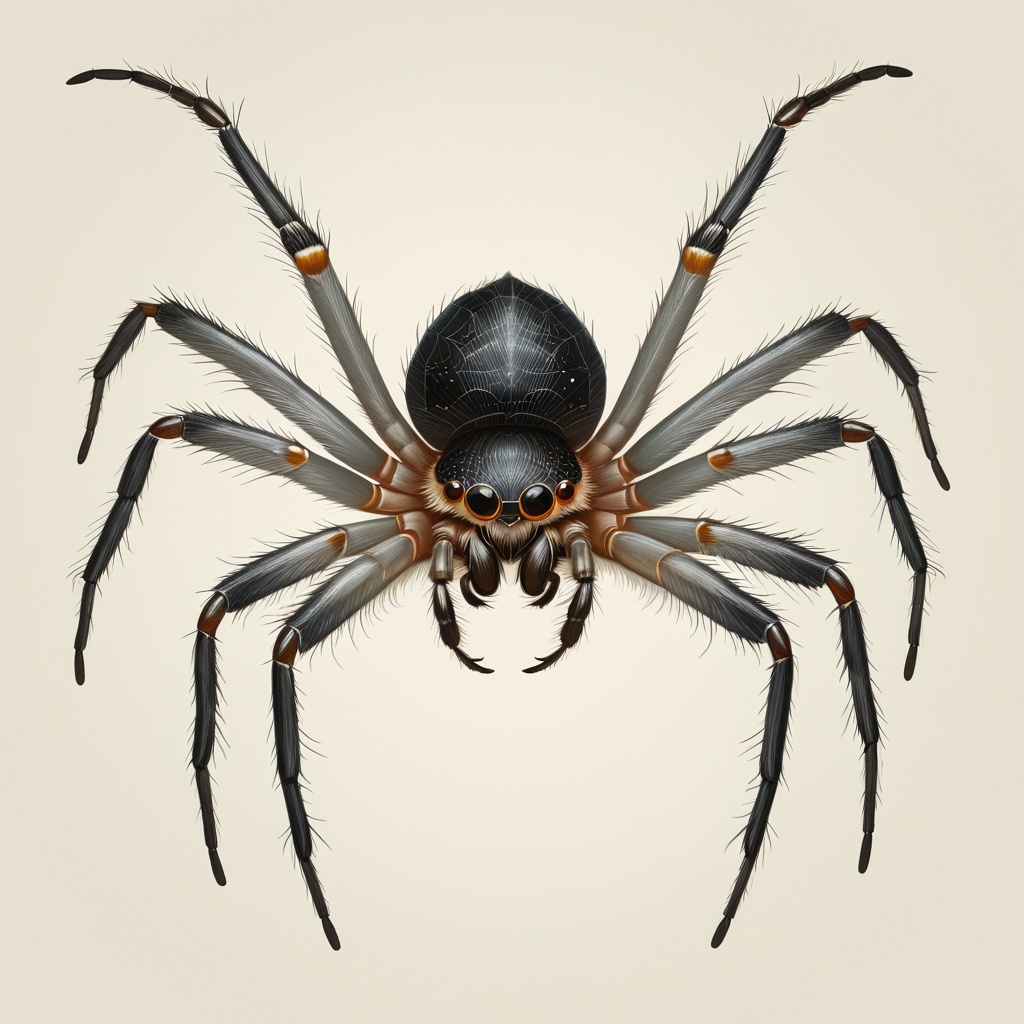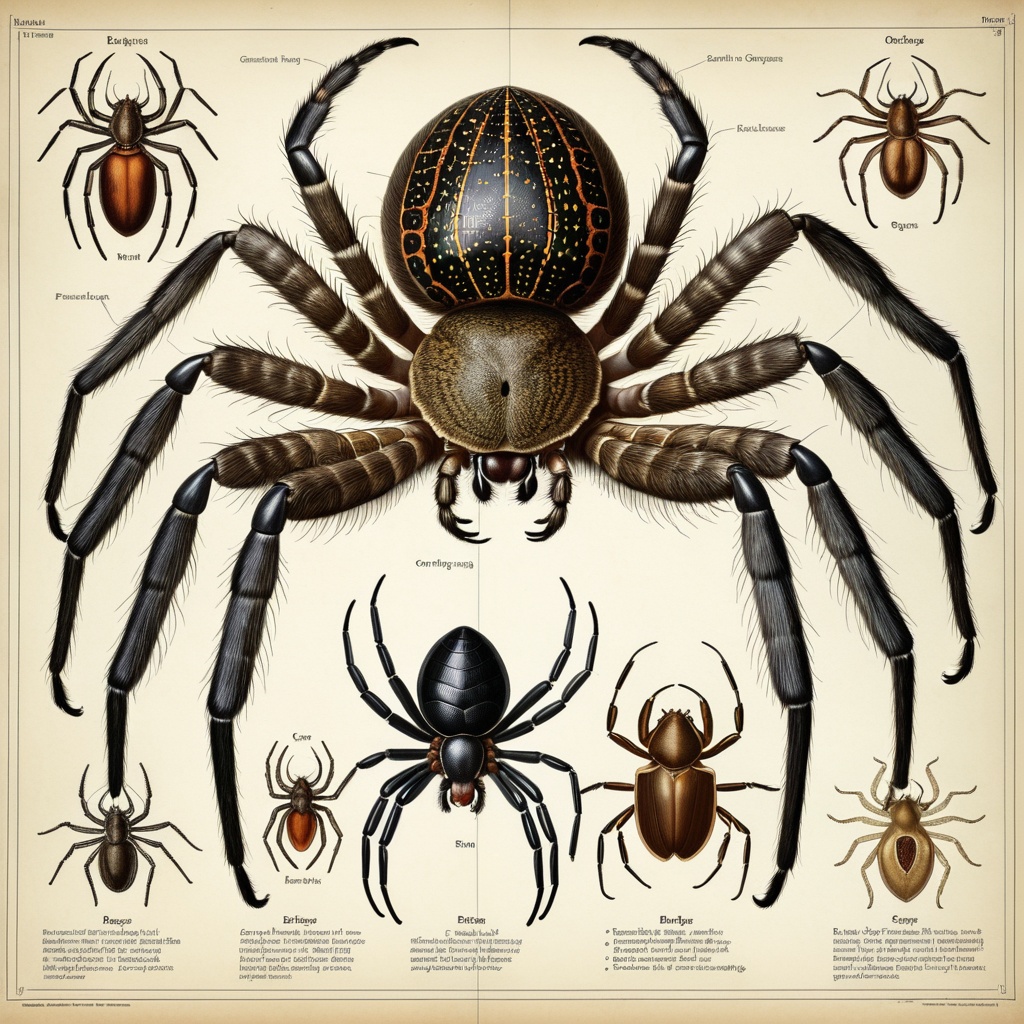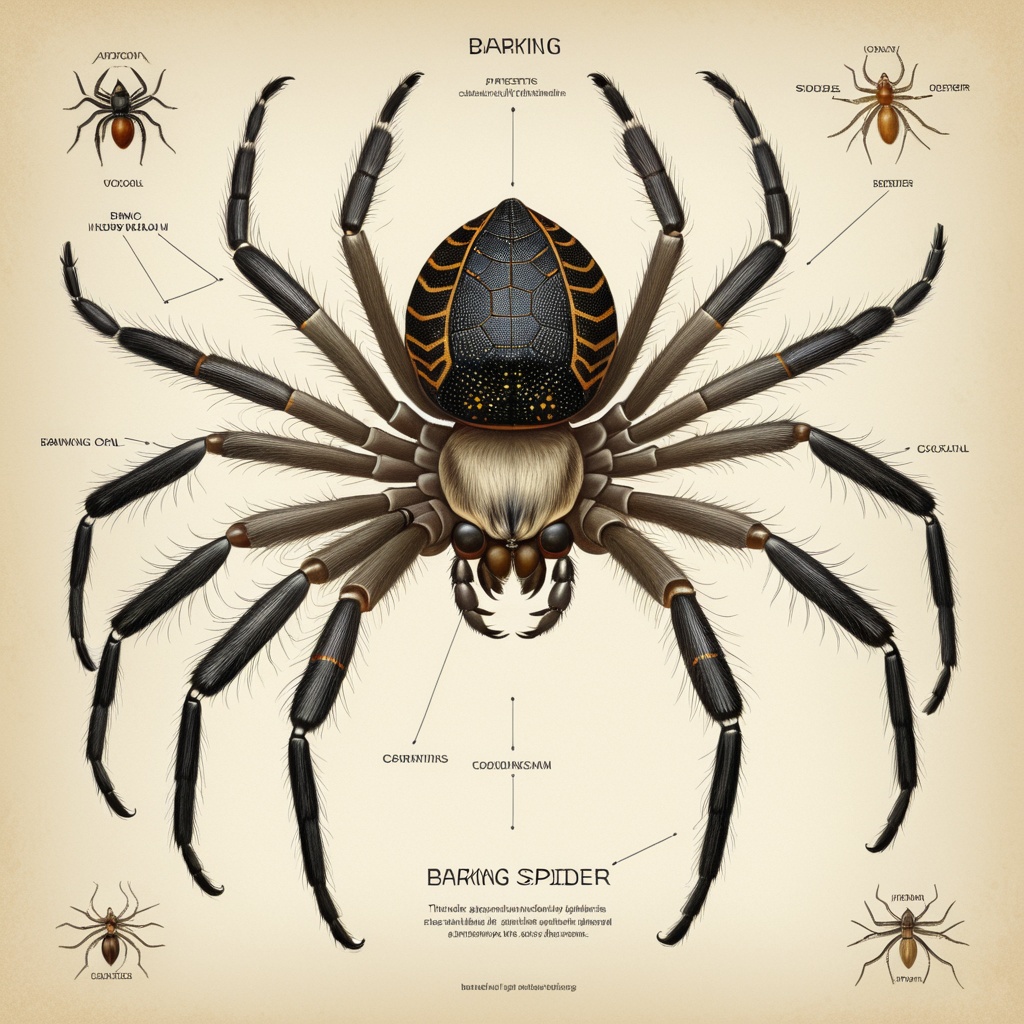Common House Barker
Flatulus domesticus

The Common House Barker is the most widespread species of barking spider, found on every continent except Antarctica. Known for its impeccable timing, this species typically barks during awkward silences or important moments in television shows.
House Barkers are social creatures that often live in family groups. They're most active after meals, particularly those high in fiber or complex carbohydrates.
Their distinctive bark is a deep, resonant sound with a slight rumble at the end. Males tend to produce louder barks than females, especially when trying to impress potential mates or establish dominance.


